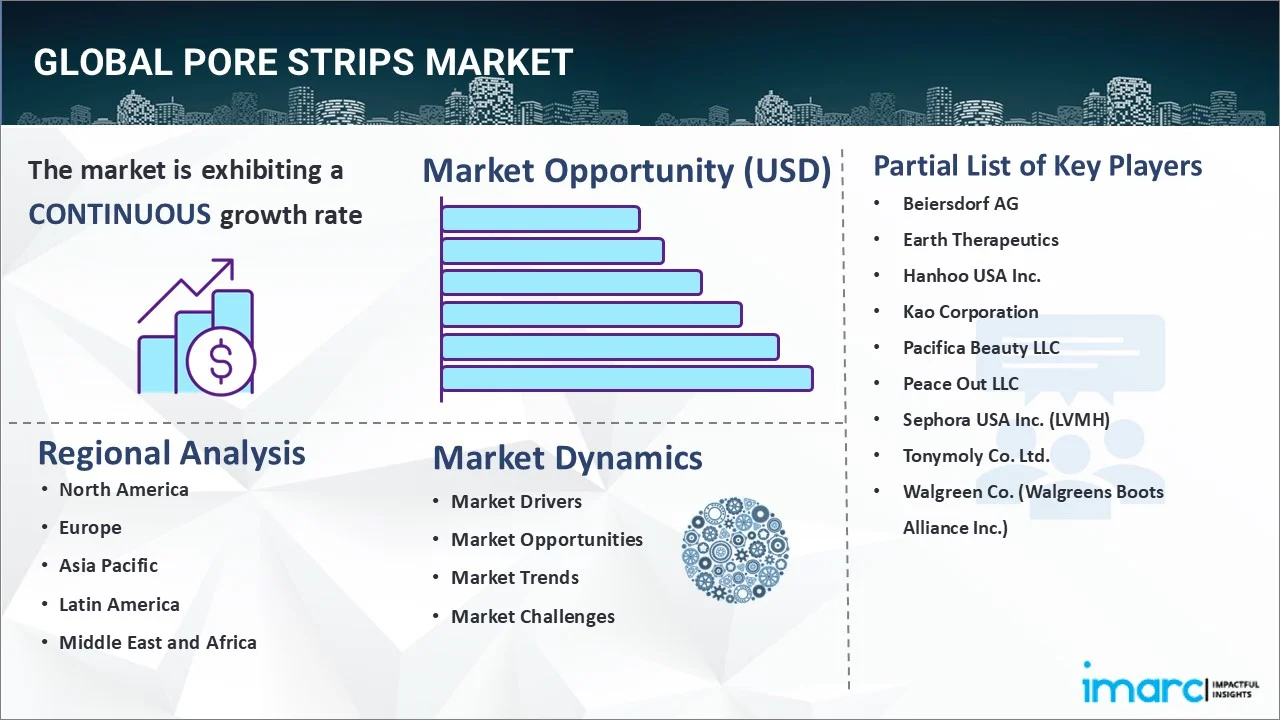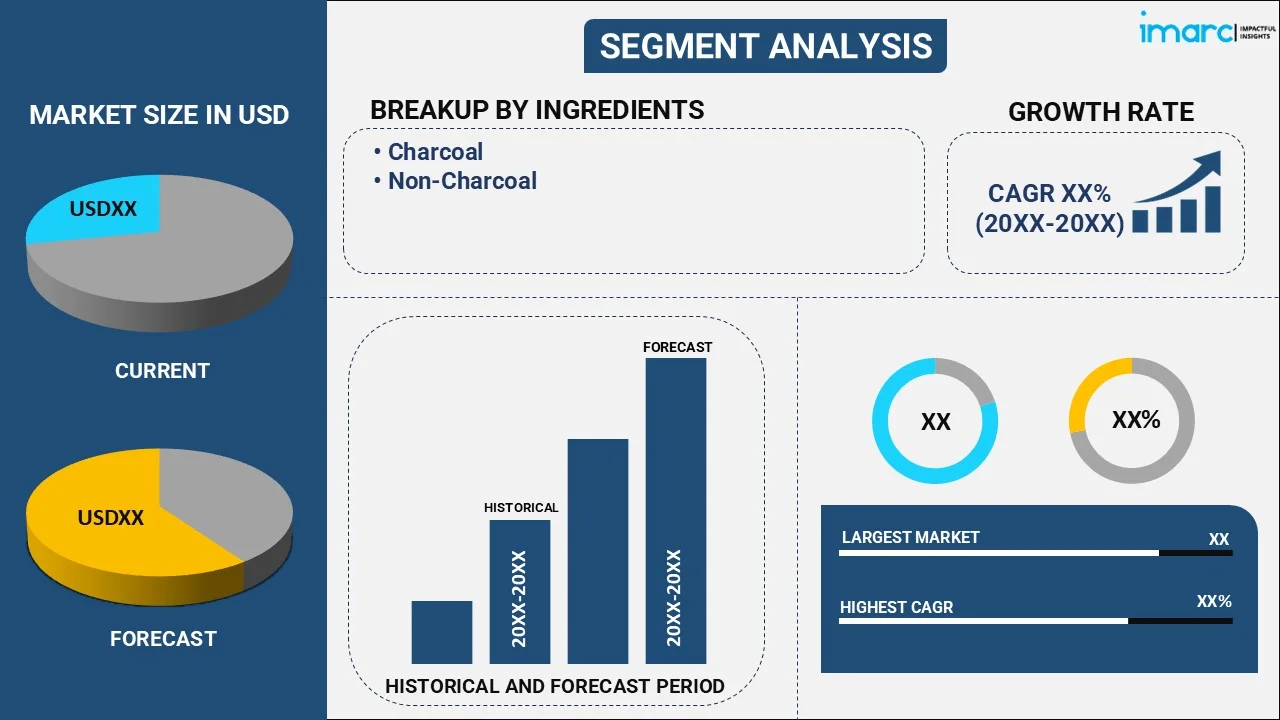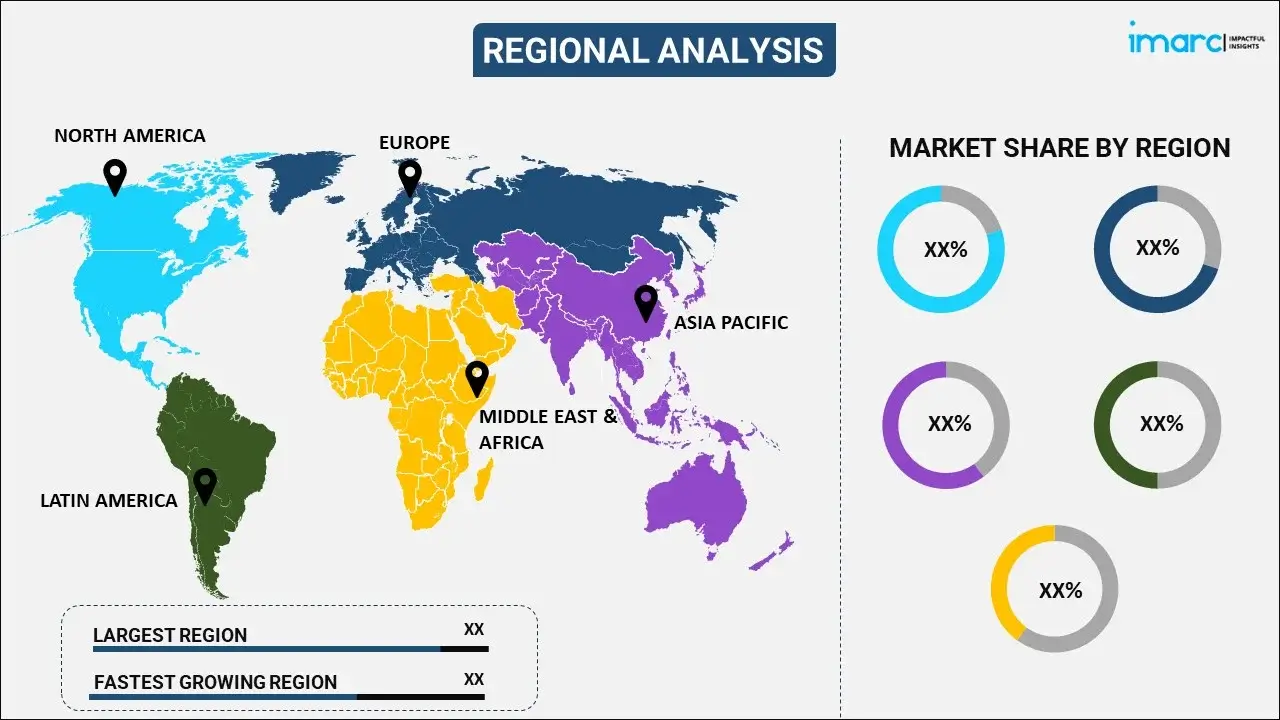
Pore Strips Market Report by Ingredient (Charcoal, Non-Charcoal), Distribution Channel (Hypermarket and Supermarket, Online Store, Convenience Stores, Independent Retailers, and Others), End User (Salon, Home), and Region 2025-2033
Market Overview:
The global pore strips market size reached USD 1.70 Billion in 2024. Looking forward, IMARC Group expects the market to reach USD 2.73 Billion by 2033, exhibiting a growth rate (CAGR) of 5.29% during 2025-2033. The increasing consumer consciousness regarding beauty and personal appearance, the rising prevalence of numerous skin problems, and inflating expenditure capacities represent some of the key factors driving the market.
|
Report Attribute
|
Key Statistics
|
|---|---|
|
Base Year
|
2024 |
|
Forecast Years
|
2025-2033
|
|
Historical Years
|
2019-2024
|
| Market Size in 2024 | USD 1.70 Billion |
| Market Forecast in 2033 | USD 2.73 Billion |
| Market Growth Rate 2025-2033 | 5.29% |
Pore strips, also known as nose strips, refer to a popular skincare product made using a thin, flexible, and usually woven material coated with a strong adhesive and other ingredients. They are designed to remove blackheads, dead skin cells, and other impurities from the pores on the nose. The adhesive allows the strip to stick to wet skin and clog the pores tightly. The strip typically dries within 10 to 15 minutes of application on the skin, after which it is pulled off, removing anything that sticks to it. They assist in unclogging pores, thus keeping them free of plugs, reducing their chances of being inflamed and turning into active acne. They also help improve skin texture and give the appearance of smooth skin by effectively clearing out dirt, debris, blackheads, whiteheads, and oil from the pores. As a result, pore strips have gained immense popularity among individuals who are widely incorporating them as part of their regular skincare routine. Nowadays, key players are also offering pore strips in various types, including pre-moistened pads, peel-off masks, and strips, for use on the forehead, chin, and other parts of the face.

Pore Strips Market Trends:
Pore strips aid in deep cleaning and purifying the skin while maintaining a healthy and clear skin tone. Consequently, the increasing consciousness regarding beauty and personal appearance among the masses represents the primary factor driving the market growth. Moreover, the surging prevalence of skin problems, such as acne and blemishes, has encouraged individuals to spend more on skin care and grooming products. This, in turn, is augmenting the demand for pore strips as their regular use aids in reducing the chances of acne breakouts by eliminating impurities from the skin. Additionally, individuals increasingly prefer pore strips as a quicker, easier, and more convenient alternative to their traditional counterparts, such as scrubs, which require a specific amount of time and a lengthy process before showing visible results. In line with this, the shifting consumer inclination toward effective and fast-acting skincare solutions, especially among the young and working population, has accelerated product adoption rates. Furthermore, the leading manufacturers are introducing pore strips made from more natural and plant-based ingredients, such as charcoal and green tea extract, due to the rising consumer preferences for organic skincare products. Along with this, continual product innovations, such as the launch of pore strip patches designed to be worn overnight or for extended periods for deep cleaning pores while sleeping, have propelled the market growth. Other factors, including the incorporation of additional skincare ingredients in pore strips to nourish the skin, inflating consumer purchasing power, improving lifestyles, aggressive promotional activities, and easy product availability across online and offline retail channels, are also providing a positive impact on the market growth.
Key Market Segmentation:
IMARC Group provides an analysis of the key trends in each segment of the global pore strips market report, along with forecasts at the global, regional, and country levels for 2025-2033. Our report has categorized the market based on ingredients, distribution channel, and end user.
Ingredients Insights:

- Charcoal
- Non-Charcoal
- Silica
- Tea Tree Oil
- Others
The report has provided a detailed breakup and analysis of the pore strips market based on the ingredients. This includes charcoal and non-charcoal (silica, tea tree oil and others). According to the report, non-charcoal represented the largest segment.
Distribution Channel Insights:
- Hypermarket and Supermarket
- Online Store
- Convenience Stores
- Independent Retailers
- Others
A detailed breakup and analysis of the pore strips market based on the distribution channel has also been provided in the report. This includes hypermarket and supermarket, online store, convenience stores, independent retailers, and others. According to the report, online stores accounted for the largest market share.
End User Insights:
- Salon
- Home
The report has provided a detailed breakup and analysis of the pore strips market based on the end user. This includes salon and home. According to the report, home represented the largest segment.
Regional Insights:

- North America
- United States
- Canada
- Europe
- Germany
- France
- United Kingdom
- Italy
- Spain
- Others
- Asia Pacific
- China
- Japan
- India
- South Korea
- Australia
- Indonesia
- Others
- Latin America
- Brazil
- Mexico
- Others
- Middle East and Africa
The report has also provided a comprehensive analysis of all the major regional markets, which include North America (the United States and Canada); Europe (Germany, France, the United Kingdom, Italy, Spain, and others); Asia Pacific (China, Japan, India, South Korea, Australia, Indonesia, and others); Latin America (Brazil, Mexico, and others); and the Middle East and Africa. According to the report, Asia Pacific was the largest market for pore strips. Some of the factors driving the Asia Pacific pore strips market included the rising consumer spending on beauty and skincare products, aggressive promotional activities by key players, increasing penetration of e-commerce platforms in the region, etc.
Competitive Landscape:
The report has also provided a comprehensive analysis of the competitive landscape in the global pore strips market. Competitive analysis such as market structure, market share by key players, player positioning, top winning strategies, competitive dashboard, and company evaluation quadrant has been covered in the report. Also, detailed profiles of all major companies have been provided. Some of the companies covered include Beiersdorf AG, Earth Therapeutics, Hanhoo USA Inc., Kao Corporation, Pacifica Beauty LLC, Peace Out LLC, Sephora USA Inc. (LVMH), Tonymoly Co. Ltd., Walgreen Co. (Walgreens Boots Alliance Inc.), etc. Kindly note that this only represents a partial list of companies, and the complete list has been provided in the report.
Pore Strips Market Report Scope:
| Report Features | Details |
|---|---|
| Base Year of the Analysis | 2024 |
| Historical Period | 2019-2024 |
| Forecast Period | 2025-2033 |
| Units | Billion USD |
| Scope of the Report | Exploration of Historical and Forecast Trends, Industry Catalysts and Challenges, Segment-Wise Historical and Predictive Market Assessment:
|
| Ingredients Covered |
|
| Distribution Channels Covered | Hypermarket and Supermarket, Online Store, Convenience Stores, Independent Retailers, Others |
| End Users Covered | Salon, Home |
| Regions Covered | Asia Pacific, Europe, North America, Latin America, Middle East and Africa |
| Countries Covered | United States, Canada, Germany, France, United Kingdom, Italy, Spain, China, Japan, India, South Korea, Australia, Indonesia, Brazil, Mexico |
| Companies Covered | Beiersdorf AG, Earth Therapeutics, Hanhoo USA Inc., Kao Corporation, Pacifica Beauty LLC, Peace Out LLC, Sephora USA Inc. (LVMH), Tonymoly Co. Ltd., Walgreen Co. (Walgreens Boots Alliance Inc.), etc. |
| Customization Scope | 10% Free Customization |
| Post-Sale Analyst Support | 10-12 Weeks |
| Delivery Format | PDF and Excel through Email (We can also provide the editable version of the report in PPT/Word format on special request) |
Key Questions Answered in This Report:
- How has the global pore strips market performed so far, and how will it perform in the coming years?
- What are the drivers, restraints, and opportunities in the global pore strips market?
- What is the impact of each driver, restraint, and opportunity on the global pore strips market?
- What are the key regional markets?
- Which countries represent the most attractive pore strips market?
- What is the breakup of the market based on the ingredients?
- Which is the most attractive ingredients in the pore strips market?
- What is the breakup of the market based on the distribution channel?
- Which is the most attractive distribution channel in the pore strips market?
- What is the breakup of the market based on end user?
- Which is the most attractive end user in the pore strips market?
- What is the competitive structure of the global pore strips market?
- Who are the key players/companies in the global pore strips market?
Key Benefits for Stakeholders:
- IMARC’s report offers a comprehensive quantitative analysis of various market segments, historical and current market trends, market forecasts, and dynamics of the pore strips market from 2019-2033.
- The research study provides the latest information on the market drivers, challenges, and opportunities in the global pore strips market.
- The study maps the leading, as well as the fastest-growing, regional markets. It further enables stakeholders to identify the key country-level markets within each region.
- Porter's five forces analysis assist stakeholders in assessing the impact of new entrants, competitive rivalry, supplier power, buyer power, and the threat of substitution. It helps stakeholders to analyze the level of competition within the pore strips industry and its attractiveness.
- Competitive landscape allows stakeholders to understand their competitive environment and provides an insight into the current positions of key players in the market.
Need more help?
- Speak to our experienced analysts for insights on the current market scenarios.
- Include additional segments and countries to customize the report as per your requirement.
- Gain an unparalleled competitive advantage in your domain by understanding how to utilize the report and positively impacting your operations and revenue.
- For further assistance, please connect with our analysts.
 Inquire Before Buying
Inquire Before Buying
 Speak to an Analyst
Speak to an Analyst
 Request Brochure
Request Brochure
 Request Customization
Request Customization




.webp)




.webp)












